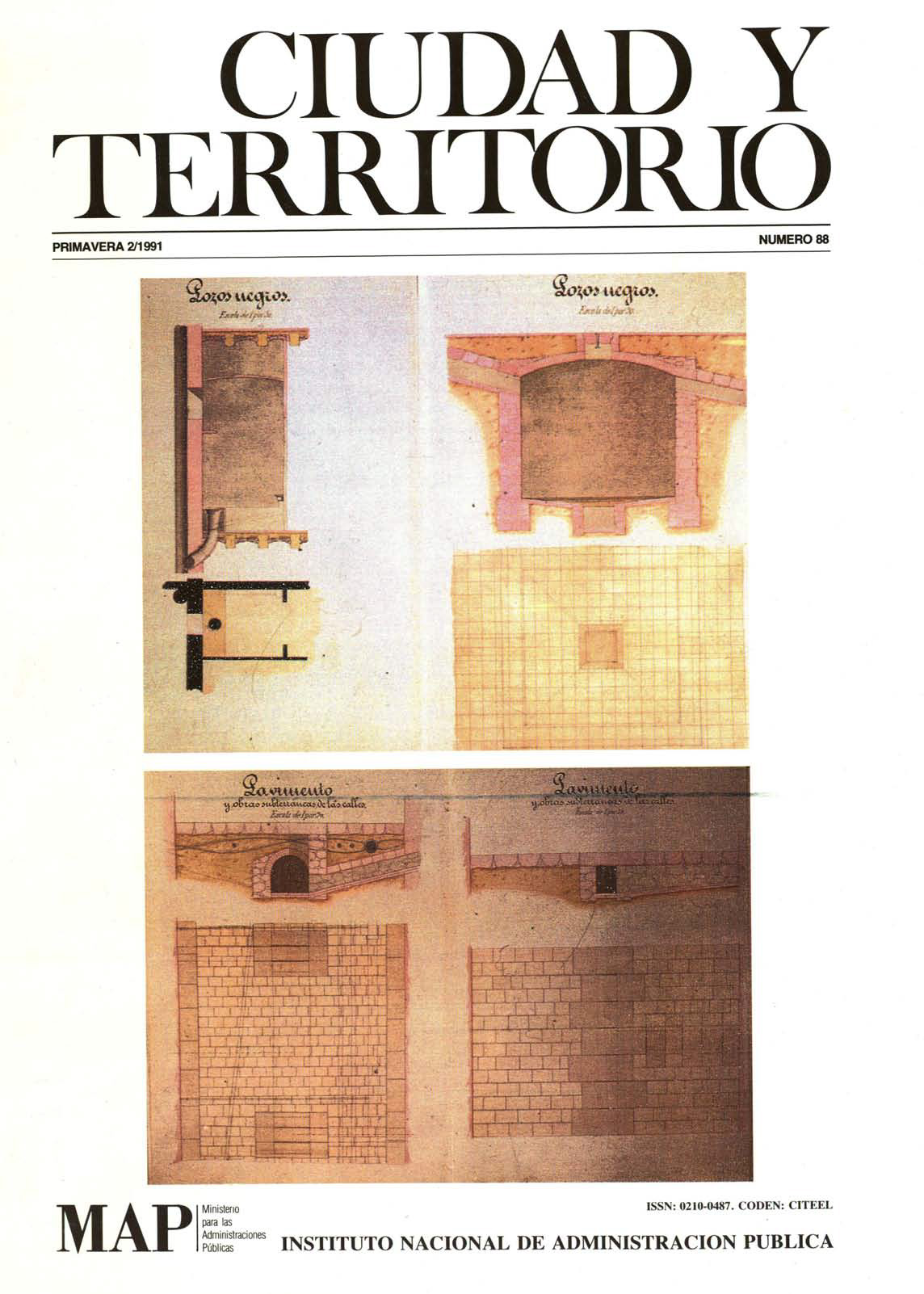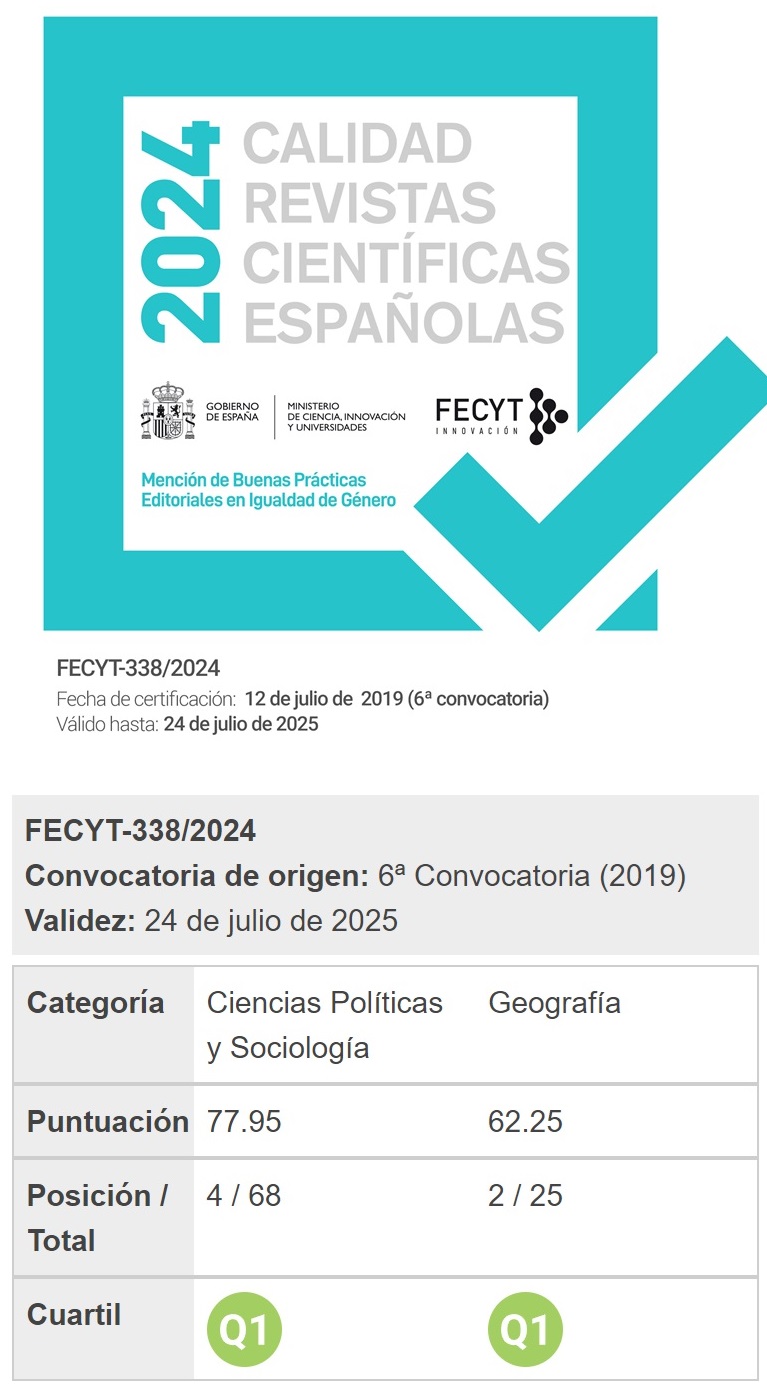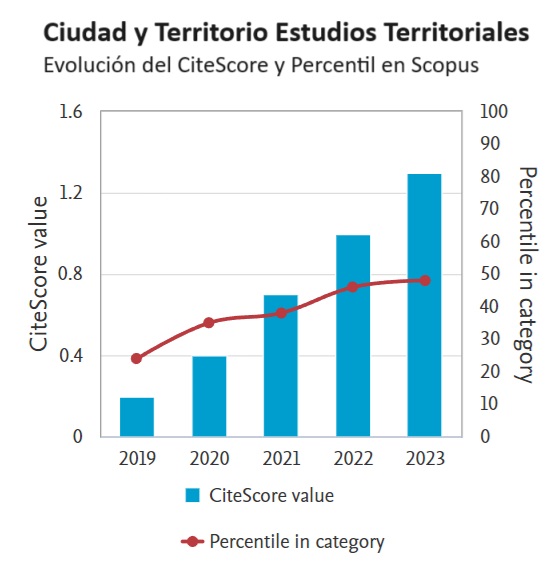El suelo verde urbano: La experiencia de Madrid
Resumen
Se realiza un brevísimo repaso de lo que ha sido la evolución de la política, las actuaciones y las frustraciones del planeamiento de espacios libres y zonas verdes en Madrid en los últimos cincuenta años, teniendo siempre presente que el tratamiento sectorial de la cuestión no puede ni podrá nunca desligarse de las líneas generales de crecimiento de la ciudad. Las concepciones globales del Plan General de 1942-conectadas a su vez con ofertas del planeamiento municipal y comarcal de preguerra- presentan continuidad en el tiempo, reapareciendo con matizaciones en el Plan General de 1963 e, incluso, en el vigente Plan General de 1985. Igualmente, se analiza y evalúa el nivel de desajuste e incumplimiento de lo previsto en los planes y la problemática que presenta la adquisición y gestión del suelo, la localización, accesibilidad y funcionabilidad de dichos espacios; profundizándose en los resultados ofrecidos por el primer cuatrienio de vigencia del P.G.O.U.M. (1985-1989) para la consecución de un «modelo integrado de ciudad» que permita «reequilibrar ambientalmente la ciudad» e integrar la red de espacios verdes, con el objetivo de «mejorar la calidad de vida los madrileños».
Descargas
Descargas
Publicado
Cómo citar
Número
Sección
Licencia
Derechos de autor 1991 Rafael Mata Olmo, Olga Tarancón, Luis Galiana, Cristina Sanabria

Esta obra está bajo una licencia internacional Creative Commons Atribución-NoComercial-SinDerivadas 4.0.
Sin perjuicio de lo dispuesto en la legislación vigente sobre Propiedad Intelectual, y conforme a la misma, el/la los/las autor/a/es/as que publiquen en CyTET cede/n a título gratuito, de modo no exclusivo y sin límite temporal al Ministerio de Transportes, Movilidad y Agenda Urbana los derechos para difundir, reproducir, comunicar y distribuir en cualquier formato actual o futuro, en papel o electrónico, la versión original o derivada de su obra bajo licencia de Creative Commons Reconocimiento-NoComercial-SinObraDerivada 4.0 Internacional (CC BY-NC-ND 4.0), así como para incluir o ceder a terceros la inclusión de su contenido en índices, repositorios y bases de datos nacionales e internacionales, con referencia y reconocimiento en todo caso de la autoría del mismo.
Además, al realizar el envío, el/la los/las autor/a/es/as declara/n que se trata de un trabajo original en el que se reconocen las fuentes que han sido utilizadas en su estudio, comprometiéndose a respetar la evidencia científica y a no modificar los datos originales para verificar o refutar una hipótesis de partida; que el contenido esencial del mismo no ha sido publicado previamente ni se publicará en ninguna otra obra o revista mientras esté en proceso de evaluación en la revista CyTET; y que no se ha remitido simultáneamente a otra publicación.
Los autores deben firmar un Formulario de Cesión de Derechos, que les será enviado desde la Secretaría de CyTET una vez se acepte su artículo para ser publicado.
Con el objetivo de favorecer la difusión del conocimiento, CyTET se adhiere al movimiento de revistas de Open Access (OA) y entrega la totalidad de sus contenidos a diversos índices, repositorios y bases de datos nacionales e internacionales bajo este protocolo; por tanto, la remisión de un trabajo para ser publicado en la revista presupone la aceptación explícita por parte del autor/a de este método de distribución.
Se anima a las/os autoras/es a reproducir y alojar sus trabajos publicados en CyTET en repositorios institucionales, páginas web, etc. con la intención de contribuir a la mejora de la transferencia del conocimiento y de la citación de dichos trabajos.








 Enlace a CyTET en Linkedin
Enlace a CyTET en Linkedin